
From Hell is a graphic novel by writer Alan Moore and artist Eddie Campbell, originally published in serial form from 1989 to 1998. The full collection was published in 1999 by Top Shelf Productions.

Cujo is a 1981 horror novel by American writer Stephen King about a rabid Saint Bernard. The novel won the British Fantasy Award in 1982 and was made into a film in 1983. Cujo's name was based on the alias of Willie Wolfe, one of the men responsible for orchestrating Patty Hearst's kidnapping and indoctrination into the Symbionese Liberation Army. King discusses Cujo in On Writing, referring to it as a novel he "barely remembers writing at all." King wrote the book during the height of his struggle with alcohol addiction. King goes on to say he likes the book and wishes he could remember enjoying the good parts as he put them on the page.

It is a 1986 horror novel by American author Stephen King. It was his 22nd book and the 17th novel written under his own name. The story follows the experiences of seven children as they are terrorized by an evil entity that exploits the fears of its victims to disguise itself while hunting its prey. "It" primarily appears in the form of Pennywise the Dancing Clown to attract its preferred prey of young children.

Nicole de Boer is a Canadian actress. She is best known for starring in the cult film Cube as Joan Leaven, playing Ezri Dax on the final season of Star Trek: Deep Space Nine (1998–1999), and as Sarah Bannerman on the series The Dead Zone (2002–2007). From 2016 to 2021, she had a recurring role as Becca Dorsay, ex-wife of one of the series leads on the Canadian-produced crime drama Private Eyes.
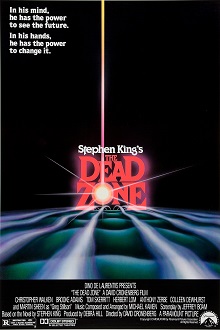
The Dead Zone is a 1983 American science-fiction thriller film directed by David Cronenberg. The screenplay, by Jeffrey Boam, is based on the 1979 novel of the same title by Stephen King. The film stars Christopher Walken, Brooke Adams, Tom Skerritt, Herbert Lom, Martin Sheen, Anthony Zerbe, and Colleen Dewhurst. Walken plays a schoolteacher, Johnny Smith, who awakens from a coma to find he has psychic powers. The film received positive reviews. The novel also inspired a television series of the same name in the early 2000s, starring Anthony Michael Hall, the pilot episode of which borrowed some ideas and changes used in the 1983 film.

Castle Rock is a fictional town appearing in Stephen King's fictional Maine topography, providing the setting for a number of his novels, novellas, and short stories. Castle Rock first appeared in King's 1979 novel The Dead Zone and has since been referred to or used as the primary setting in many other works by King.
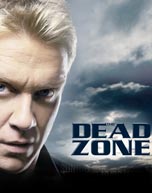
The Dead Zone, also known as Stephen King's The Dead Zone is a science-fiction drama television series starring Anthony Michael Hall as Johnny Smith, who discovers he has developed psychic abilities after a coma. The show, credited as "based on characters" from Stephen King's 1979 novel of the same name, first aired in 2002, and was produced by Lionsgate Television and Paramount Network Television for the USA Network.
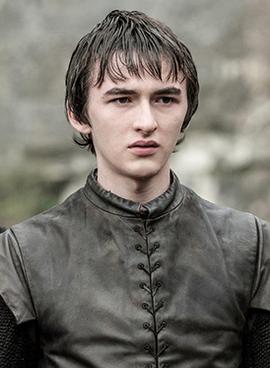
Brandon Stark, also known as Bran, is a fictional character in the A Song of Ice and Fire series of epic fantasy novels by American author George R. R. Martin, and its television adaptation Game of Thrones, where he is portrayed by English actor Isaac Hempstead Wright. Introduced in 1996's A Game of Thrones, Bran subsequently appears in A Clash of Kings (1998) and A Storm of Swords (2000). He is one of a few prominent characters that are not included in the fourth novel A Feast for Crows (2005), but returned in the fifth novel A Dance with Dragons (2011).
"Cartman's Incredible Gift" is the 124th episode of the Comedy Central series South Park. It originally aired December 8, 2004 as part of the series' eighth season. In the episode, local police become convinced that Eric Cartman has psychic abilities, which Cartman exploits for personal gain, much to the ire of Kyle Broflovski, other psychic detectives, and the true serial killer behind a series of murders that Cartman falsely attributes to others.
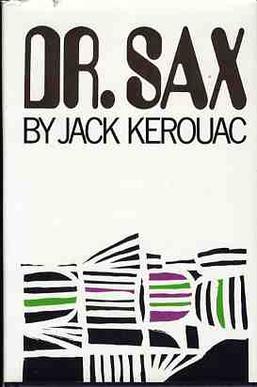
Doctor Sax is a novel by Jack Kerouac published in 1959. Kerouac wrote it in 1952 while living with William S. Burroughs in Mexico City.

Monster Nation (2005) is a horror novel by American writer David Wellington. It concerns the opening days of a zombie apocalypse and the end of the world.
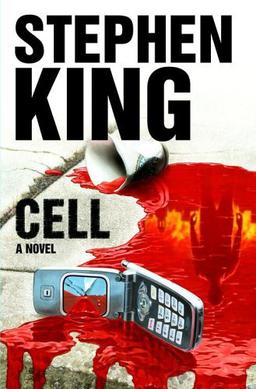
Cell is a 2006 apocalyptic horror novel by American author Stephen King. The story follows a New England artist struggling to reunite with his young son after a mysterious signal broadcast over the global cell phone network turns the majority of his fellow humans into mindless vicious animals.

Gojiro is the 1991 debut novel by former Esquire columnist Mark Jacobson. It reinterprets the Godzilla film series from the perspective of the daikaiju—not a fictional creature depicted on-screen via suitmation, but an irradiated varanid-turned B-movie star named Gojiro. Gojiro, a freak mutation with a cynical worldview, suffers the pain of solitude as well as several maladies experienced by entertainers, including drug abuse and suicidal tendencies. The story revolves around his adventures with human friend Komodo, a scientific genius scarred as a child by the atomic bombing of Hiroshima, as they attempt to fulfill their "Triple Ring Promise" to bring about world peace. The odyssey takes them from their home on Radioactive Island—also home to several children, called Atoms, suffering from radiation sickness—to several locations in Hollywood and the Trinity site in New Mexico.
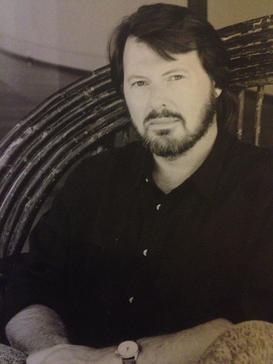
Jeffrey David Boam was an American screenwriter and film producer. He is known for writing the screenplays for The Dead Zone, Indiana Jones and the Last Crusade, Innerspace, The Lost Boys, and Lethal Weapon 2 and 3. Boam's films had a cumulative gross of over US$1 billion. He was educated at Sacramento State College and UCLA. Boam died of heart failure on January 26, 2000, at age 53.

The Vision is a 1977 horror-mystery novel by American writer Dean Koontz.
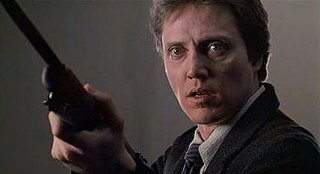
John Smith is a fictional character and the protagonist of Stephen King's 1979 novel The Dead Zone. He possesses psychic abilities that allow him to see moments of the future and past, usually triggered by touching objects or a person related to that future. He is portrayed by Christopher Walken in the 1983 film and Anthony Michael Hall in the 2002 television series. Paste Magazine has ranked Johnny Smith the sixth out of eight creepiest Christopher Walken performances.

Daniel Anthony "Danny" Torrance, also known as Doctor Sleep, is a fictional character who first appears in the 1977 novel The Shining by Stephen King as a child with psychic powers called "the shining". His parents are father Jack Torrance and mother Wendy Torrance. The character was portrayed in the 1980 film adaptation The Shining by Danny Lloyd and by Courtland Mead in the 1997 television miniseries The Shining.

The Mind of Mr. Soames is a 1970 British-American sci-fi–drama film directed by Alan Cooke and starring Terence Stamp, Robert Vaughn and Nigel Davenport about a man who awakens from a 30-year coma with an immature brain. The film is based on Charles Eric Maine's 1961 novel of the same name.

A Second Chance at Sarah is a fantasy graphic novel written by Neil Druckmann, with illustrations by Joysuke Wong. The novel was originally published by Ape Entertainment on February 24, 2010; Dark Horse Comics re-released the novel on August 20, 2014. The book follows Johnny, who makes a deal with a demon to go back in time and save his dying wife, who fell into a coma upon the birth of their son.
Brain Wave is a supervillain appearing in the DC Comics Universe, a recurring foe of the Justice Society of America and a founding member of the Injustice Society; he is also the father of the superhero Brainwave.


















